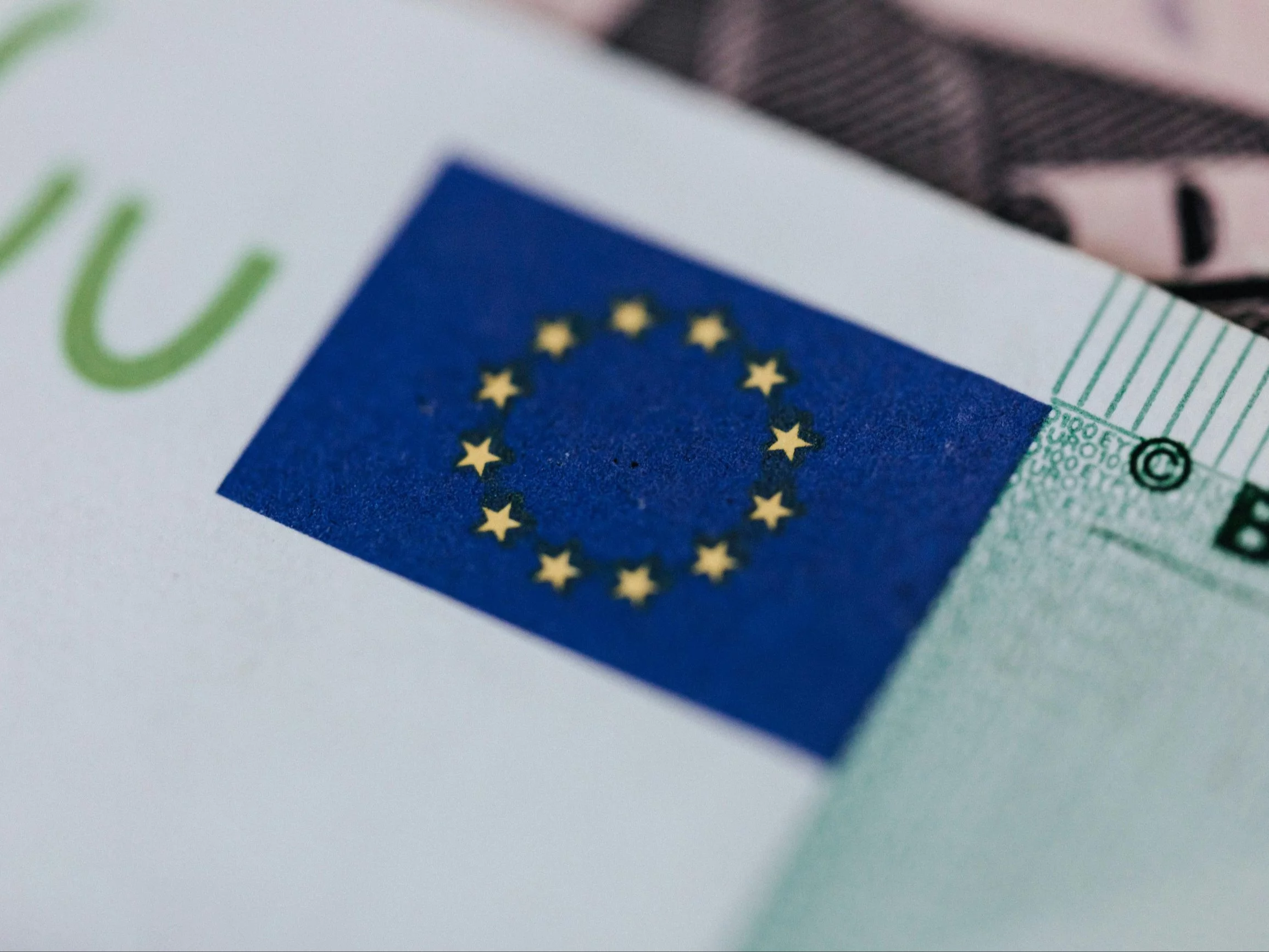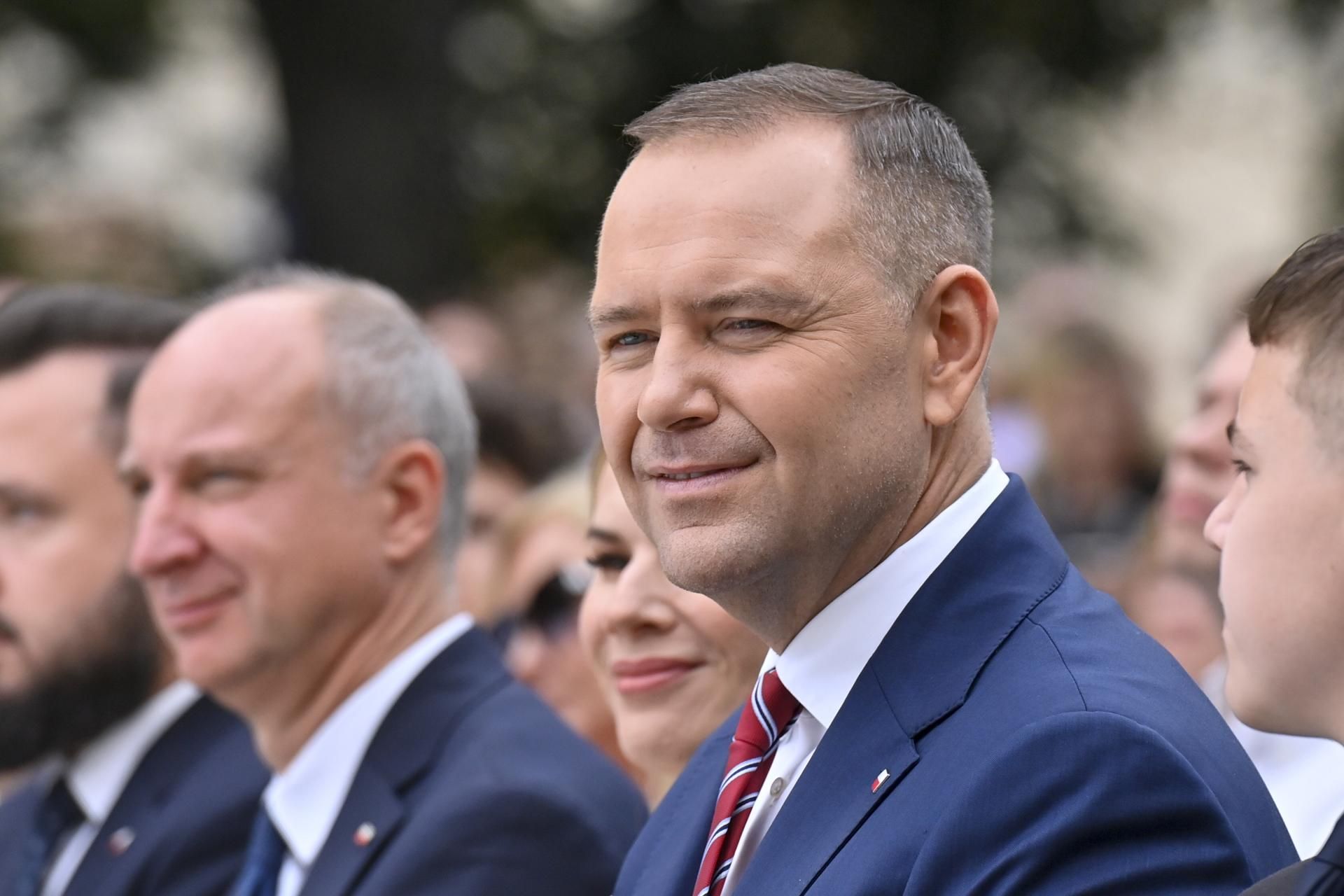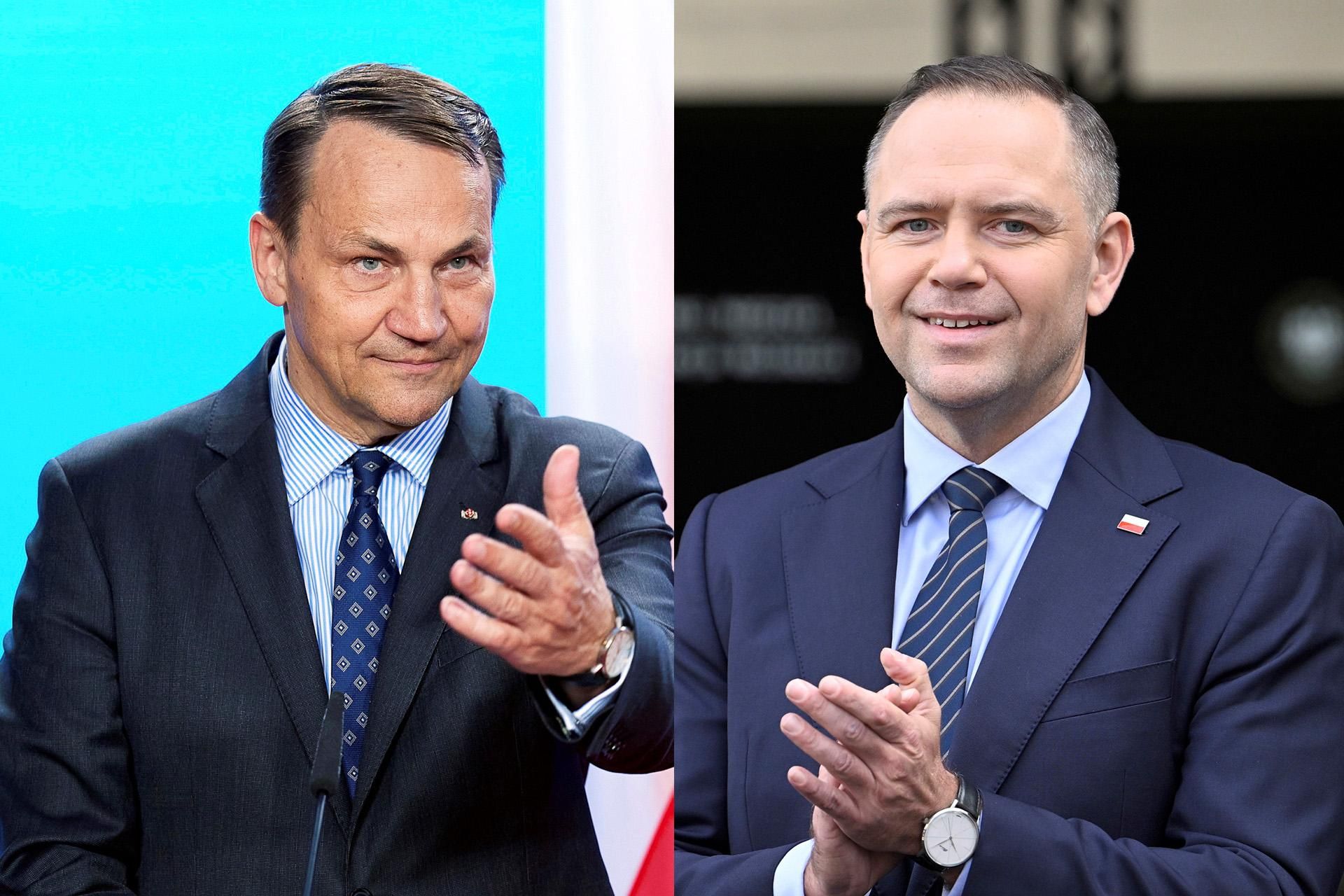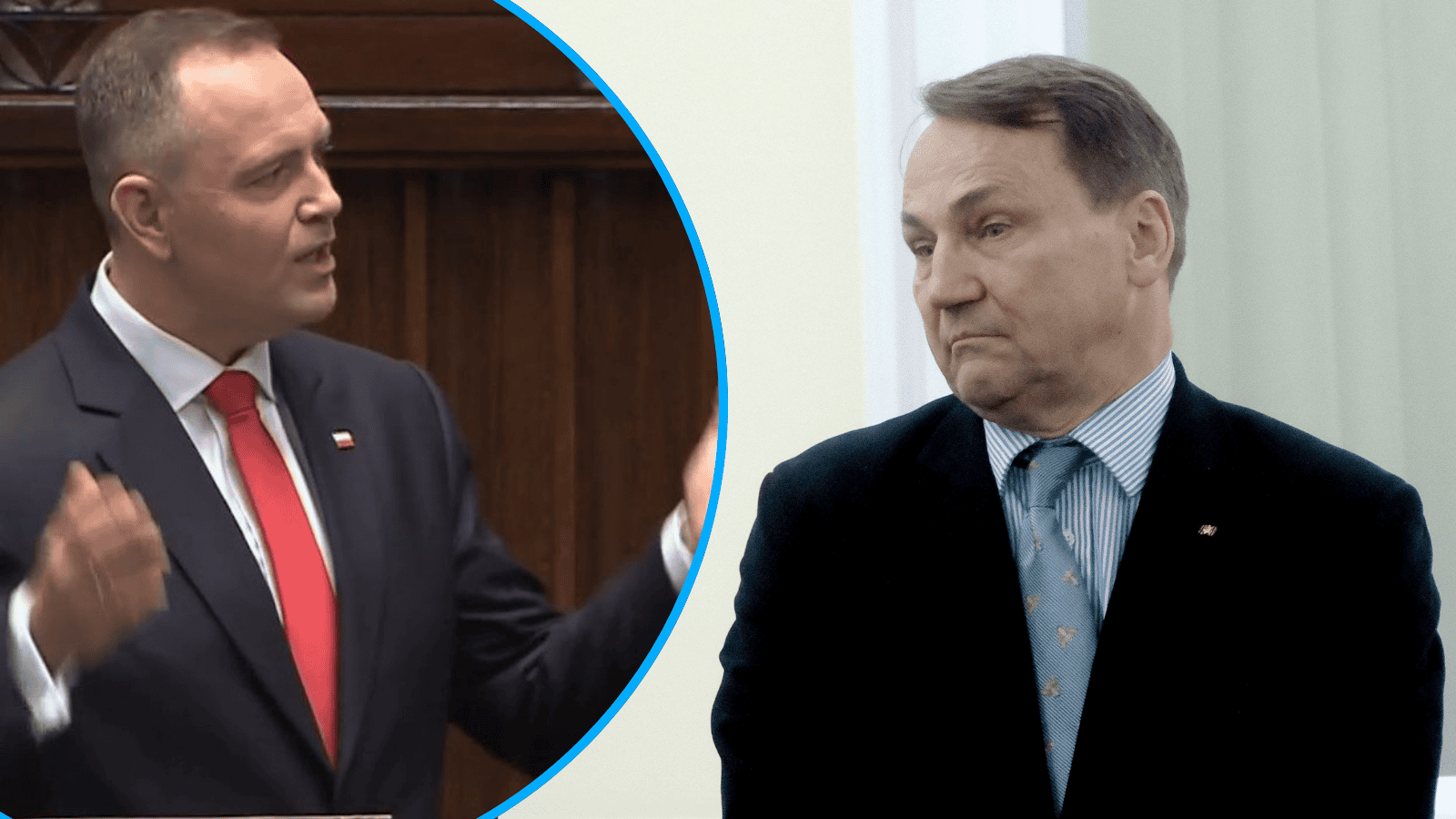
Futures Rise Ahead Of Data Deluge, S&P Set For 7th Straight Record High
US equity futures are up again, and set for a 7th consecutive record high into a heavy earnings day and ahead of tomorrow’s Fed decision as attention turns from trade deals to company results and economic data to justify nosebleed valuations. As of 8:00am, S&P futures are 0.2% higher after the index hit its latest record high on Monday; tech is outperforming again and Nasdaq 100 contracts up 0.5%. In pre-market trading, Mag7, Semis, and Cyclicals are outperforming. Bond yields are lower (10Y yield at 4.3919%, down 2bps) as the USD rally is poised to continue after the dollar climbed to its strongest level in more than five weeks on speculation a slew of readings on the economy will show the tariff impact is contained. Commodities are mixed with energy leading on US / RU geopolitics. The macro data focus today includes JOLTS, Housing Prices, regional Fed activity indicators, trade data, inventories, and consumer confidence.
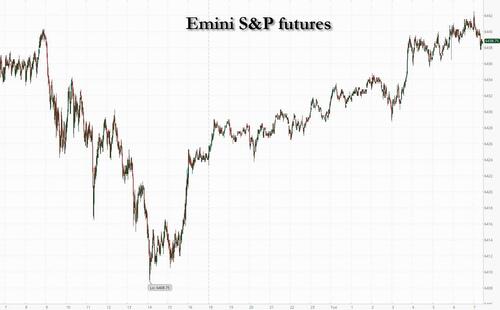
In premarket trading, Mag 7 stocks are mostly higher ahead of the coming earnings deluge (Nvidia +1.5%, Amazon +0.4%, Meta +0.4%, Tesla +0.3%, Microsoft +0.2%, Apple little changed, Alphabet -0.2%). Here are some other notable premarket movers:
- Amkor Technology (AMKR) jumps 9% after the company gave an upbeat sales forecast for 3Q that predicted a boost from the production of iPhone sockets.
- Cadence Design (CDNS) is up 7.6% after boosting its outlook for the year even as the maker of chip-design tools also pleaded guilty to charges accusing the company of violating US export controls.
- Chart Industries (GTLS) is up 17% after the Financial Times reported that Baker Hughes is nearing a $13.6 billion cash deal to buy the equipment maker, gatecrashing an earlier agreement to merge with rival Flowserve.
- Exelixis (EXEL) falls 13% after reporting lower-than-expected quarterly sales of its cancer drug Cabometyx.
- Philips ADRs (PHG) jump 9.5% after the Dutch medical-technology firm reported better-than-expected results for the second quarter and increased its profitability outlook for the year.
- Stellantis’ US shares (STLA) fall 3.5% after the carmaker updated its estimate of 2025 net tariff impact to about €1.5 billion ($1.73 billion), of which €300 million was incurred in 1H 2025.
- UnitedHealth (UNH) is down 3.7% after forecasting adjusted earnings per share for the full year of at least $16; the average analyst estimate sat at $20.40.
- UPS (UPS) is down 3.8% after the courier declined to provide earnings guidance as it struggles to get a handle on volatility in the market, underscoring the challenges for its effort to reconfigure its network and revitalize its business.
- Whirlpool (WHR) shares slump 15% after the appliance maker cut its full-year forecast for ongoing earnings per share. The updated outlook of no more than $8 missed the average analyst estimate of $8.78.
In corporate news, India overtook China to become the top source of smartphones sold in the US after Apple shifted more assembly of its iPhones there. Sarepta Therapeutics shares are soaring in premarket trading after US regulators recommended patients who can walk are allowed to take its gene therapy Elevidys again. Procter & Gamble promoted its chief operating officer to CEO. Whirlpool shares slumped in premarket trading after the appliance maker cut its full-year forecast. Cadence Design rose after boosting its outlook.
Investor attention is turning from recent US tariff deals with the European Union and Japan to key indicators spanning jobs and inflation to broader economic activity. The Federal Reserve is forecast to keep interest rates unchanged Wednesday, while investors will be tracking earnings from four megacap tech companies this week. The market is putting the chance of a 25-basis point cut this time around at just about 3%. while traders continue to lean toward a quarter-point cut at the Fed’s meeting in mid-September, with around 100 bps of easing seen over the next 12 months. Pressure from the White House for immediate rate cuts has the potential to sow dissent as Chair Jerome Powell and his colleagues begin a two-day meeting. Fidelity reckons gold could hit $4,000 an ounce by the end of next year as the Fed cuts rates, the dollar drops, and central banks keep adding holdings.
“President Trump continues to call for much lower interest rates,” Gabriele Foà, portfolio manager at Algebris Investments, wrote in a note. “With inflation not surging and the labor market softening, maintaining real rates at their current elevated levels will be increasingly difficult.”
We’re in the thick of earnings, with Boeing, Procter & Gamble, UPS and Starbucks all reporting on Tuesday. So far, the season has been one of “big beats but snail’s pace growth,” Bloomberg Intel’s Gina Martin Adams and Wendy Soong said, adding that preseason forecasts were too low. Magnificent 7 members Apple, Amazon, Microsoft and Meta Platforms are all due to report numbers in the coming days. Robust corporate earnings have bolstered investor confidence in US stocks, as companies head for their highest share of beats since the second quarter of 2021.
Also in focus will be the Treasury Department’s update of debt-sales plans, due Wednesday. Traders expect issuance of Treasury bills to expand as the government tackles the financing of large deficits over the next quarter and into 2026.
In the latest tariff news, Commerce Secretary Lutnick said a 90-day extension of a trade truce with China was a likely outcome with negotiations between the two countries underway in Stockholm. Higher tariffs are threatening to add to the burden already weighing on the US economy. Only Mexico among major economies is forecast to see a bigger dropoff in GDP growth than the US over 2025 and 2026, according to Bloomberg Economics.
Meanwhile, US and Chinese officials finished the first of two days of talks aimed at extending their tariff truce beyond a mid-August deadline and hashing out ways to maintain trade ties while safeguarding economic security. The EU dodged an imminent trade war with the US, but markets and a growing chorus of critics have dispelled early hopes that the deal will bring a sense of stability back to transatlantic relations. The EU and US will seek to clinch a non-legally binding joint statement by Aug. 1 that will expand on some of the elements negotiated over the weekend, according to a senior EU official. One advantage to a trade deal that benefits the US more than Europe, for stock investors at least, is a weaker euro that makes European exports more competitive. The euro extended its slide to the weakest level in more than a month amid concern over the economic impact of the EU’s deal with the US.
“There is one positive, and it’s not the trade deal,” said Andrea Gabellone, equity strategist at KBC Securities in Brussels. “The positive is what happened yesterday on the FX market when finally the dollar caught a bid and the euro had a healthy correction.”
Taking a look at technicals, long positioning on US equity futures keeps increasing, and is now getting stretched for US growth stocks, according to Citi strategists. Goldman’s Peter Oppenheimer said valuations are high enough that it’s prudent to keep diversifying into other markets. The impact of tariffs may hurt equity prices even after recent trade deals, he added.
US consumer confidence is expected to have shown an improvement in data due Tuesday, with JOLTS job openings statistics also on deck. Growth and inflation numbers out Wednesday are seen offering further signs of economic resilience.
In Europe, the Stoxx 600 rises 0.6%, led by industrials, banks and health care. Royal Philips soared as much as 14% after the Dutch medical-technology firm raised its profitability outlook, as the trade war impact was less severe than feared. Eyewear firm EssilorLuxottica gains after reassuring results. Amundi drops as analysts flag the firm’s higher flows are from lower-margin clients and products. Stellantis slips after giving an update on the tariff impact. Here are the biggest movers Tuesday:
- Philips shares jump as much as 14%, the most in a year, after the Dutch medical-technology firm reported better-than-expected results for the second quarter and increased its profitability outlook for the year
- EssilorLuxottica rises as much as 5.6%, hitting the highest since May 23, with analysts viewing the eye-wear maker’s results as reassuring. Jefferies highlights that margin in the first half “held up well”
- Rexel climbs as much as 5.7% following 1H which is seen as in-line to very slightly ahead by analysts. The French electrical-equipment distributor’s performance in North America helped to offset a weaker period elsewhere
- Games Workshop risesas much as 8.8%, rebounding from a two month low, as its annual results surpassed expectations following a strong year that saw the Warhammer games specialist deliver growth across all key geographies
- TF1 shares rise as much as 5.1%, the most since April 10, lifted by what analysts described as reassuring operating profits for the second quarter which came slightly above expectations
- Heidelberger Druckmaschinen shares rise as much as 24% after the German printing firm furthers its push into the booming defense industry by entering a strategic partnership with Vincorion Advanced Systems
- Forterra rises as much as 12%, the most in three-and-a-half years, after the masonry products company beat expectations in the first half and improved its earnings guidance for the full year
- Amundi shares dropped as much as 6.2%, the worst performer among financial services stocks in Europe, as analysts flagged the firm’s higher flows and assets under management are from lower margin clients and products
- Stellantis shares fall as much as 4.8% after the carmaker updated its estimate of 2025 net tariff impact to about €1.5 billion ($1.73 billion), of which €300 million was incurred in 1H 2025
- Sika shares fall as much as 4.6% after the building materials firm reported an Ebitda miss and lowered its top-line outlook for the full year. Morgan Stanley notes that while trends are bottoming, investors may need to wait more
- Forbo shares plunge as much as 13%, the most in almost five months, after the Swiss linoleum maker reported results that missed estimates, including a big miss for margins, according to ZKB
- Xvivo Perfusion falls as much as 12% to January 2023 lows, after the Swedish organ-transplant equipment maker announced that European CE certification for its key growth product will be delayed by between 6 and 12 months
- Endesa fell as much as 7% to be the worst performing stock on Spain’s IBEX-35 after the utility reported net
- income for the first half that missed estimates
Earlier in the session, Asian equities extended losses for a third consecutive session, poised for their longest losing streak in nearly two months, as investors awaited key monetary policy decisions from Japan and the US. The MSCI Asia Pacific Index drop 0.5%, with TSMC and Toyota among the biggest drags. Stocks fell in Tokyo, where attention is focused on the Bank of Japan’s policy announcement due Thursday. Losses were also notable in Hong Kong, Taiwan, and Vietnam. South Korean shares bucked the region’s losses Tuesday, gaining as the won weakened. Indonesian equities gained after the country pledged to use its fiscal and monetary firepower to ensure economic growth is maintained at 5% this year.
In FX, the Bloomberg Dollar Spot Index is little changed after earlier rising to a five-week high. The euro, which had been one of the weakest majors, is now nearly flat. The Swedish krona is the biggest G-10 decliner, down 0.3% against the greenback.
In rates, treasuries edge higher in early US trading after erasing small declines. Yields are lower across maturities by as much as 2bp with most curve spreads slightly flatter; 10-year is lower by 1.6bp near 4.39%. Price action is similarly muted in core European bond markets. US session features last of this week’s three coupon auctions and a heavy slate of economic data including June JOLTS job openings. Major events later this week include Wednesday’s Fed rate decision and Friday’s July employment report. Bunds underperform, with German 10-year yields rising nearly one basis point to 2.69%. This week’s compressed coupon auction concludes with $44 billion 7-year note sale at 1pm, the last coupon auction of the May-July financing quarter; quarterly refunding announcement for August-to-October is on Wednesday at 8:30am New York time
In commodities, spot gold climbs $11 to around $3,325/oz. WTI rises 0.7% to around $67 a barrel. Bitcoin rises 0.7% toward $119,000.
Taking a look at today’s macro data, Wholesale inventories for June are due at 8.30 am ET, followed half an hour later by the Federal Housing Finance Agency’s house price index for May. JOLTS job data for June and the Conference Board’s reading of consumer confidence for July are both due at 10 am. Earnings highlights include Visa, Procter & Gamble, UnitedHealth, L’Oréal, and AstraZeneca. On the auction front, the US will issue $30bn in 2-year FRNs and $44bn in 7-year notes.
Market Snapshot
- S&P 500 mini +0.3%
- Nasdaq 100 mini +0.4%
- Russell 2000 mini +0.4%
- Stoxx Europe 600 +0.6%
- DAX +1.1%, CAC 40 +1.2%
- 10-year Treasury yield +1 basis point at 4.42%
- VIX -0.3 points at 14.73
- Bloomberg Dollar Index little changed at 1209.18
- euro -0.1% at $1.1577
- WTI crude +0.8% at $67.26/barrel
Top Overnight News
- Trump has pushed US tariffs on foreign goods to the highest level since before WWII as he enacts his sweeping protectionist agenda. The wall of levies since he took office in January has now taken the country’s effective tariff level to an estimated 17.3%. FT
- Germany and France hit out at the long-awaited EU-US trade deal on Monday, warning it would wound the bloc’s economy as the euro slid against the dollar. German Chancellor Merz said the agreement would cause “considerable damage” to his country, Europe, and the US itself. “Not only will there be a higher inflation rate, but it will also affect transatlantic trade overall.” FT
- A 90-day extension of the US-China trade truce is possible, Howard Lutnick said. Taiwan’s president appeared to cancel a trip next week after the Trump administration denied his US stopover on concerns it may jeopardize trade talks with Beijing. BBG
- Trump denied seeking a summit with Xi Jinping, saying he’d visit China only if invited — an invitation he says has been extended. BBG
- In a potential sign from Trump to keep the China relationship on a positive trajectory, the White House has denied a request from Taiwan’s president to stop in NYC next week as part of a trip to Central America. FT
- Japan’s two-year bond auction saw the strongest demand since October, as yields neared their highest levels since 2008. BBG
- India overtook China to become the biggest shipper of smartphones to the US in the June quarter. The country now accounts for 44% of the American market. BBG
- UnitedHealth (UNH) set a new earnings target below The Street’s estimates for the year. Stock is -4.8% in the premkt, sees FY25 adj EPS of at least $16.00, we think buyside expectations were for $18.00. Mgmt said Medical costs in the quarter “significantly exceeded pricing trends.” BBG
- Healthcare prices are set to shift higher for a variety of reasons, and Trump’s 15% tariff on the Eurozone pharma industry, a massive supplier of drugs into the US, is just one more factor that will drive costs higher. NYT
Trade/Tariffs
- Japan’s Economy Minister Akazawa, says his understanding is that if a third country reaches an agreement with the US on lower sectoral tariffs, such as chips and pharma, the same rate would apply to Japan.
- US President Trump posted „I’m in Scotland now after having just completed the EU Deal, and numerous others. The United States is doing GREAT, to put it mildly!!!”
- US Commerce Secretary Lutnick said President Trump will mull a few deals this week and set tariff rates on other nations by the end of the week, while he added the table is set with nations that have offered access and „Next week, we’re off”.
- US President Trump’s administration reportedly hears competing proposals on Myanmar policy shift with the Trump team reviewing policy ideas on Myanmar, focused on trade, critical minerals, and China competition, according to Reuters sources.
- South Korea’s Finance Minister said they will do their best to derive the best trade agreement and will discuss shipbuilding, as well as other areas for longer-term cooperation with the US.
- Chinese trade negotiations team arrives at the venue for a second day of talks with the US. 29th July 2025
A more detailed look at global markets courtesy of Newsquawk
APAC stocks traded mixed with a mostly negative bias after a similar performance among global peers as participants digested trade developments and as risk events loom. ASX 200 marginally declined with weakness in telecoms and the top-weighted financial sector leading the descent, while there were few catalysts to provide an uplift. Nikkei 225 continued to give back previous trade-related spoils despite recent currency weakness. Japanese PM Ishiba remained defiant and noted there is no change in his intention to stay in office despite many reportedly calling for PM Ishiba’s resignation at Monday’s LDP meeting. Hang Seng and Shanghai Comp were pressured albeit to varying degrees with little information so far from the US-China talks in Sweden which are set to enter a second day
Top Asian News
- US President Trump posted „The Fake News is reporting that I am SEEKING a “Summit” with President Xi of China. This is not correct, I am not SEEKING anything! I may go to China, but it would only be at the invitation of President Xi, which has been extended. Otherwise, no interest!”
- Japan’s ruling LDP is said to hold a decision-making plenary meeting, according to FNN. It was separately reported that Japanese Finance Minister Kato said sales tax is vital for the social security system in Japan and it is inappropriate to lower the consumption tax rate.
- China is to ‘tighten oversight’ in crowded manufacturing sectors such as EVs and solar power, according to SCMP citing a Ministry of Industry and Information Technology (MIIT) meeting on Monday.
- Toyota (7203 JT) is to reportedly start EV production in Europe as early as 2028, according to Nikkei.
European bourses (STOXX 600 +0.5%) opened mostly higher and continued to trade with an upward bias throughout the morning. Upside which follows a mostly higher session on Wall Street, but in contrast to mixed price action across the APAC region. European sectors hold a positive bias, with only a handful of industries residing in the red. Industrials take the top spot, lifted by significant post-earning strength in Philips (+13%). Basic Resources is found at the foot of the pile, with downside today driven by broadly lower metals prices.
Top European News
- ECB staff accused ECB President Lagarde of running an 'unaccountable legal fortress’ with members of its own staff accusing the central bank of behaving in an „anti-democratic” way in the latest escalation of tensions between the ECB and its employees, according to FT.
- ECB Consumer Expectations Survey (Jun) – 1-year CPI 2.6% (prev. 2.8%), 3-year 2.8% (prev. 2.8%), 5-year 2.1% (prev. 2.1%).
- Deutsche Bank no longer expects the ECB to deliver rate cuts; now sees next policy move to be a rate hike at the end of 2026.
FX
- After a steady start to the session, DXY is once again on the front foot with the index mechanically boosted by the weakening EUR. That being said, there are some reasons to be positive surrounding the US, mainly on the trade front with the US continuing to grind out deals with trading partners and facing no retaliation in doing so. Furthermore, markets are also anticipating a 90-day extension of the current 90-day US-China truce. Today, attention will turn towards the data slate with JOLTS and Consumer Confidence due on deck. DXY briefly made its way onto a 99 handle with a session peak at 99.05.
- EUR/USD has very much picked up where it left off as the selling pressure in the pair continues following the EU-US trade agreement. Initially many desks were of the view that the removal of uncertainty would be deemed as a market positive. However, this narrative has since given way to negativity around the actual terms of the deal. This has been voiced by various national leaders such as German Chancellor Merz, who warned of the significant impact it will have on the German economy. Elsewhere, the June ECB Consumer Expectations Survey for June saw the 1-year inflation expectation decline to 2.6% from 2.8%. EUR/USD has taken out its 50DMA at 1.1570 with a current session low at 1.1527.
- GBP is softer vs. the USD but to a lesser extent than most peers following the recent cross-related selling in EUR/GBP. ING writes that the recent moves appear to be driven more by positioning, „where opposing fiscal and monetary prospects between the eurozone and the UK had made long EUR/GBP one of the conviction trades this summer”. Cable has hit a multi-month low at 1.3315 with not much in the way of support seen until the 1.33 mark.
- JPY is the only of the majors firmer/flat vs. the USD as a run of three consecutive losses vs. the USD pauses for breath. The extent of the rebound is relatively limited at this stage and as such, it is probably not worth reading too much into the price action. Political uncertainty in Japan remains rife with ongoing speculation over whether PM Ishiba will be forced to step down from his position following the recent upper house elections. USD/JPY ventured as high as 148.74 before pulling back below Monday’s 148.57 peak.
- Antipodeans are on the backfoot today, swept away alongside the broadly firmer Dollar. Overnight, the Aussie and Kiwi were little changed and price action was fairly muted given the mixed risk appetite in the region.
Fixed Income
- USTs are contained amid quiet newsflow. Had a slight upward bias in the early European morning but only a handful of ticks in magnitude at most. Marginal strength that faded as the morning progressed with the risk tone strong. For the US, the day’s main events include a number of data points such as JOLTS, Consumer Confidence, then Atlanta Fed’s GDPNow tracker before US 7yr supply. Today, direction will be drawn from the mentioned data points though it remains to be seen just how much the market will move into a packed second half of the week with the FOMC on Wednesday, PCE on Thursday and then NFP on Friday.
- Bunds are directionally in-fitting with USTs, though trading heavier than their US counterpart so far. Pressure that is seemingly a function of the outperformance seen in Bunds yesterday with the benchmark ending the day near its 129.79 peak. Spent the early European morning contained near that peak and Monday’s 129.73 close. Thereafter, as outlined in USTs above, Bunds came under pressure to a 129.43 low with downside of 30 ticks at most as the risk tone picked up. No real move to the German Bobl auction which was in-line with its introduction.
- Gilts have been in the red and while they have, like Bunds, been lower by 30 ticks at most, for the most part, they have been trading marginally better than their German peer. However, ahead of the morning’s DMO auction this flipped slightly as Bunds came marginally off lows, following a slight pullback in the equity risk tone and potentially as yields reacted to session highs in crude, while Gilts proved relatively unreactive and remained just off lows. Supply was strong, with Gilts lifting by a handful of ticks post-auction and now trade roughly in-line with Bunds. Leaving Gilts 10 ticks off the 91.16 low but some 20 from the initial 91.46 high.
- Most recently, the complex has bounced a touch following the UK/German supply, albeit still within ranges and with the directional bias still at play.
- UK sells GBP 5bln 4.375% 2028 Gilt: b/c 3.71x (prev. 3.46x), average yield 3.941% (prev. 3.847%) & tail 0.2bps (prev. 0.1bps).
- Germany sells EUR 3.409bln vs exp. EUR 4.5bln 2.20% 2030 Bobl: b/c 1.50x (prev. 1.50x), average yield 2.28% (prev. 2.26%) & retention 24.24% (prev. 24.92%).
Commodities
- WTI and Brent began the European session around the unchanged mark, taking a breather following the upside seen in the prior session – as a reminder, the complex was boosted after US President Trump cut his deadline for Russian President Putin to reach a peace deal with Ukraine. More recently, the complex has seen some upside, currently trading at session highs; nothing behind the strength, but potentially as traders position themselves ahead of another appearance from US President Trump later today and in-fitting with the positive risk tone seen in the equities complex. Brent Oct’25 currently trades towards the upper end of a USD 69.18-69.83/bbl range.
- Mixed/flat trade across precious metals, taking a breather from Monday’s price action in the absence of macro updates and in the run up to tomorrow’s FOMC. Spot gold resides in a USD 3,308.16-3,330.10/oz range, and within Monday’s USD 3,301.76-3,345.52/oz parameter.
- Mostly lower trade across precious metals as upside is seemingly hampered by the stronger dollar. 3M LME copper resides in a USD 9,759.90-9,796.85/t range at the time of writing.
- Kuwait Oil Minister says OPEC+ decisions are made based on market developments. Optimistic about oil market fundamentals, OPEC+ efforts target energy security and market balance.
- US President Trump calls on the UK to incentivise drillers in the North Sea.
US Event Calendar
- 8:30 am: Jun P Wholesale Inventories MoM, est. -0.1%, prior -0.3%
- 9:00 am: May FHFA House Price Index MoM, est. -0.2%, prior -0.4%
- 10:00 am: Jun JOLTS Job Openings, est. 7500k, prior 7769k
- 10:00 am: Jul Conf. Board Consumer Confidence, est. 96, prior 93
DB’s Jim Reid concludes the overnight wrap
For those with kids I hope you are surviving school holidays. My summer holidays were mostly spent playing in my garden with a football, cricket bat and my one golf club, whilst trying to ensure my window breaking tally was low. Yesterday I got home from work to find out my kids had just tried water skiing. How the world has changed.
The last 24 hours has seen the market try to ski across the turbulent waters behind the US/EU trade agreement boat. The evolving reaction to the deal was perhaps best captured by Volkswagen (VW) yesterday, which surged +3.02% in the opening minutes of yesterday’s session before closing -3.58% lower. It may have been a classic case of “buy the rumour, sell the fact,” especially with much of the optimism already priced in following last week’s Japan deal. VW, for instance, remains up +7.73% since that announcement. The DAX followed a similar path, opening around +0.94% higher before closing -1.02% lower.
What began as relief on Sunday quickly turned to frustration on Monday, as the narrative took hold that the EU had failed to secure meaningful concessions from the US. This was after pledging $750bn in energy imports, committing to large-scale purchases of US military equipment, and agreeing to zero tariffs on a range of US goods including autos. Whether these were genuinely new commitments or simply formalised versions of existing likely purchases is debatable, but the optics clearly favoured the US. The backlash across European diplomatic and business circles was swift. Spanish Prime Minster Sanchez said he would back the deal “without any enthusiasm” while French Prime Minister Bayrou even described the deal on X as more akin to a “submission”.
In response to the criticism, European Commission President Ursula von der Leyen reminded reporters yesterday to “not forget where we came from,” pointing to Trump’s original tariff threats of up to 50%. Still, concerns over Europe’s export sector loomed large, particularly for automakers. BMW (-3.28%) and Mercedes-Benz (-3.21%) also gave up early gains. The euro weakened, falling from a high of around 1.178 at the Asia open to 1.1589 by the US close, down -1.26% on the day – its worst performance since May. It’s steady overnight in Asia. And in a sign of how markets saw the deal favouring the US, the dollar gained against all G10 currencies.
Yesterday’s deal also left several ambiguous details. One is whether EU companies would really invest $600bn into the US economy, with EU officials admitting to Politico that this may not be achievable. Another is whether the 15% would also be the US tariff on EU pharma exports when the relevant Section 232 investigation concludes in the next few weeks. Pharma amounts to 25% of all EU exports to the US so it’s a material issue. Our European economists yesterday published a detailed take on the deal (link here), estimating the direct cost of 15% US tariffs at 0.5% of EU GDP. They have also updated their ECB call, seeing the current 2% as the likely terminal rate of the ECB’s easing cycle. While risks of another cut will persist for the coming months, they now expect the next ECB move to be a hike in late 2026.
US equities were relatively quiet as investors braced for a packed week of data and earnings. The S&P 500 (+0.02%) eked out a sixth consecutive record high, the longest such run since last July, even as over 70% of its constituents fell on the day. The upside for the S&P was dominated by the information technology sector (+0.77%) as the Mag-7 rose +0.79%. The Philadelphia semiconductor index gained +1.62% led by AMD (+4.32%). Big Tech takes centre stage with Microsoft and Meta reporting tomorrow, followed by Apple and Amazon on Thursday. The FOMC meets tomorrow, and we’ll also get core PCE, Q2 GDP, the ISM, and payrolls data before the week is out.
In bond markets, sentiment around the US-EU deal played out in divergent ways. European yields fell across the board, with 10yr bunds (-2.7bps), OATs (-3.5bps), and BTPs (-4.7bps) all moving lower. There were similar moves at the front end as the amount of ECB cuts priced by year-end actually inched up +1.5bps to 17bps despite the trade deal, showing a partial reversal of the moves that followed the ECB’s hawkish tone last week.
By contrast, 10yr US Treasury yields rose +2.2bps to 4.41% with the 30yr yield (+2.9bps to 4.96%) moving back within touching distance of 5%. Yields stayed near the session highs after a slightly soft 5yr auction. The Treasury’s latest quarterly borrowing estimates had little impact, coming largely in line with expectations, at $1.01trn for Q3 and a projected $590bn for Q4. We will learn the breakdown of this issuance plan with tomorrow’s QRA.
With less than three days to go until the August 1 deadline, more trade updates emerged. South Korea’s Finance Minister is set to meet US Treasury Secretary Bessent on Thursday to discuss a deal. Canada’s Prime Minister Carney said talks between the US and Canada “are at an intense phase”. At the UK-US summit press conference, Trump announced plans to impose a 15–20% tariff on countries that haven’t secured specific trade agreements with the US. And amid talks with China’s officials in Stockholm, US Commerce Secretary Lutnick suggested that a 90-day extension of the trade truce with China was likely, confirming Chinese press reports over the weekend.
Oil prices spiked following comments by Trump that he may announce sanctions or secondary tariffs against Russia in 10-12 days’ time, shortening the 50-day deadline he had laid out in mid-July as he cited disappointment with President Putin’s failure to agree to a ceasefire in Ukraine. Brent crude rose +2.34% to $70.04/bbl, closing above $70 for the first time since July 11.
Markets are mostly lower in Asia even as US futures are up a tenth of a percent or two. The Hang Seng (-0.95%) is leading the losses followed by the Nikkei (-0.86%) which is falling for the third consecutive session. The ASX and mainland Chinese markets are down around a tenth of a percent. The KOSPI (+0.35%) is one of the few winners overnight.
In Japan, a 2-year government bond auction saw robust demand, the highest since October, driven by more attractive yields near 2008 highs. The average bid-to-cover ratio was 4.47, compared to 3.90 in a sale from the previous month. This auction precedes the two-day BOJ’s policy meeting concluding Thursday, where the central bank is expected to hold rates steady. JGB are a basis point lower across most of the curve but the recently volatile 30yr yield is up just under three basis points.
Back in the US, the July Dallas Fed Manufacturing Activity index surprised to the upside yesterday at +0.9 (vs -9.0 expected). Today’s data calendar is packed, with June JOLTS, advance goods trade balance, wholesale inventories, and the July Conference Board consumer confidence index all due. Investors will be combing through the numbers for clues ahead of Wednesday’s Fed decision. When asked in Scotland whether the Fed would cut rates this week, Trump said, “I think it has to.” Still, Fed futures continue to price in less than 1bp of easing.
Looking ahead to the rest of today, we’ll also get the Dallas Fed Services Activity index, May FHFA house price index, UK June net consumer credit and M4, France Q2 total jobseekers, and Sweden’s June GDP indicator. On the central bank front, the ECB will release its June consumer expectations survey. Earnings highlights include Visa, Procter & Gamble, UnitedHealth, L’Oréal, and AstraZeneca. On the auction front, the US will issue $30bn in 2-year FRNs and $44bn in 7-year notes.
Tyler Durden
Tue, 07/29/2025 – 07:59

